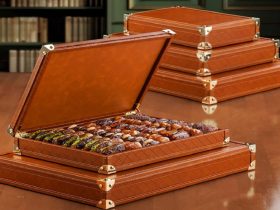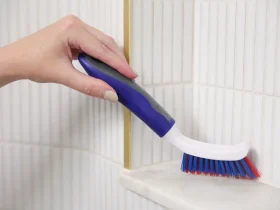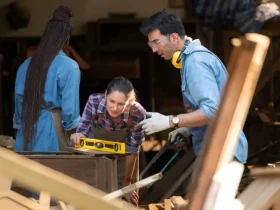Unveiling the World of Fabric: Choosing the Right Material for Your Quilt
The Allure of Cotton: Why It Reigns Supreme in Quilting
Cotton has long been heralded as the king of quilting fabrics, and for good reason. Its natural fibers provide unparalleled softness, durability, and breathability, making it a favorite among both novice and experienced quilters.
The versatility of cotton allows it to take on countless forms, from robust canvas to delicate muslin, each with unique applications in quilt making. Cotton’s propensity to hold dye exceptionally well results in vibrant color options and intricate patterns, which can elevate designs from mundane to mesmerizing.
Additionally, being a natural fiber, cotton is hypoallergenic and safe for sensitive skin, making quilts made from cotton perfect for children and those with allergies. Furthermore, cotton’s ability to withstand regular washing without significant wear or fading adds to its appeal, ensuring that your quilt can be cherished for generations.
Beyond Cotton: Exploring Alternative Quilting Fabrics
While cotton remains the gold standard, the world of quilting fabric extends far beyond it. Fabrics such as linen, wool, and even synthetics like polyester and nylon each offer distinct advantages.
Linen, with its textured finish, lends an earthy, rustic finish to quilts while being remarkably breathable and absorbent. Wool presents a unique warmth, making it suitable for colder climates, and its natural insulation properties ensure that quilts remain cozy without being overly bulky.
For those looking to experiment with vibrant designs or require fabric that resists wrinkles and fading, high-quality synthetics like polyester can be intriguing options. Additionally, innovative fabrics, such as bamboo blend fabrics, offer eco-friendly alternatives that are sustainability-focused, combining softness with an impressive drape. Understanding these alternatives allows quilters to diversify their techniques and create unique pieces that truly reflect their vision.
Understanding Thread Count: The Fabric Quality Factor
In the realm of fabric, thread count plays a crucial role in determining the quality of quilting materials. Thread count refers to the number of threads woven together in one square inch of fabric, encompassing both the horizontal (weft) and vertical (warp) threads.
A higher thread count often signifies a denser, more luxurious fabric that feels smoother against the skin and offers greater durability. While most quilt fabrics range from 40 to 200 thread counts, it’s essential to recognize that quality isn’t solely dictated by this number. The type of fibers used, the weave, and the overall construction significantly impact the fabric’s performance.
For instance, a well-constructed cotton fabric with a lower thread count can outperform a higher thread count fabric that is poorly manufactured. A deeper understanding of thread count can guide quilters in making informed choices, ensuring their quilts are both beautiful and functional.
Patterns That Speak: Finding the Perfect Design for Your Quilt
Timeless Tradition: Classic Quilt Patterns and Their Stories
Every quilt tells a story, and much of that narrative is woven into its pattern. Classic quilt patterns, such as the Log Cabin, Nine-Patch, and Bear Paw, have stood the test of time, not just for their aesthetic appeal but also for their rich histories.
The Log Cabin pattern, for instance, is emblematic of simplicity and versatility, with its squares symbolizing the warmth of home. Its design allows for vast variations, embodying the exquisiteness of individual creativity. The Nine-Patch, with its uncomplicated construction, has served as a gateway for many beginners into the world of quilting, illustrating how fundamental patterns can produce stunning outcomes.
By understanding the history and meaning behind these patterns, quilters can connect on a deeper level with their craft, imbuing their creations with personal significance and heritage that transcends generations.
Modern Aesthetics: Contemporary Designs That Wow
In contrast to traditional designs, modern quilting embraces innovation and a bold aesthetic. Contemporary patterns often draw from geometric shapes and abstract concepts, prioritizing clean lines and bright palettes that challenge conventional quilting norms.
Patterns like the Improv Quilt, which allows for spontaneous design and a “let it flow” mentality, represent the freeing exploration many modern quilters seek. Color blocking, asymmetry, and negative space have become hallmark strategies in these contemporary quilts, providing an exciting departure from the past.
The marriage of modern design and traditional techniques is also blossoming, with many quilters choosing to modernize classic patterns through unconventional fabric choices or design interpretations. This dynamic evolution empowers quilters to express their individuality and innovation, leading to breathtaking results that captivate audiences.
Mix and Match: How to Combine Patterns for Stunning Quilts
The art of mixing patterns and fabrics adds an expressive layer to quilt design, enabling quilters to create visually striking masterpieces. Successfully blending various patterns requires a keen eye for balance and harmony.
One effective approach is to use a primary fabric that sets the tone for your quilt, then complement it with secondary patterns that echo colors or themes present in the primary fabric. For instance, pairing a bold floral print with subtle geometric or solid fabrics can allow your design to shine without overwhelming the viewer.
Scale is a crucial factor—combining larger prints with smaller ones often creates a refreshing dynamic. Experimenting with unexpected color combinations or contrasting elements can transform patchwork into a powerful expression of artistry.
The Online Quilt Shop Experience: Elevating Your Shopping Journey
Virtual vs. Physical: The Benefits of Shopping Online for Fabrics
The advent of e-commerce has transformed the way quilters source their materials, making shopping more accessible than ever. Online quilt shop offer the convenience of browsing an extensive range of fabrics and patterns from the comfort of your home.
Unlike physical stores that may have limited inventory, online platforms often boast vast selections, including exclusive collections. Additionally, they provide detailed descriptions and fabric swatches, allowing quilters to discern quality and style before making a commitment.
Shopping online allows quilters to research and compare prices, read customer reviews, and find the best deals. The ease of accessing diverse products and discovering unique treasures makes the online shopping experience a game changer for quilting enthusiasts.
Customer Reviews and Recommendations: Finding the Best Options
Customer reviews and recommendations are invaluable when choosing fabrics. Online quilt shops often feature testimonials highlighting fabric quality, shipping times, and overall satisfaction.
Engaging with quilting communities through social media or forums can further enhance your understanding. Experienced quilters share insights on the best materials and supplies, while personal connections often lead to recommendations for lesser-known but exceptional fabric sources.
Implementing the wisdom of fellow enthusiasts helps filter choices and allows for more confident purchasing decisions.
Exclusive Online Deals: How to Score Discounts on Your Favorite Fabrics
Shopping for fabric online offers significant savings opportunities. Many online quilt shops host sales, offer seasonal discounts, or provide coupon codes for quilters to save on purchases.
Joining mailing lists or following social media channels of favorite shops keeps you updated on exclusive offers. Loyalty programs reward regular customers with points redeemable for discounts or free shipping. Clearance sections and remnants often contain beautiful fabrics at a fraction of the price.
Being proactive about deals allows quilters to build a robust fabric stash without straining their budgets.
From Vision to Creation: Tips for Turning Fabric into a Masterpiece
Essential Tools Every Quilter Should Own
A well-equipped quilter’s toolkit ensures projects unfold smoothly. Key tools include:
- A high-quality rotary cutter and cutting mat for precise cutting
- Quilting rulers for accurate measurements
- Quality pins and a reliable sewing machine tailored for quilting
- Specialty feet for techniques like free motion quilting or zipper installation
The right tools streamline the process and enhance the overall quality of finished pieces.
Step-by-Step Guide: Making Your First Quilt with Confidence
For novice quilters, starting your first quilt can feel daunting, but a step-by-step approach helps. Begin with a simple pattern and a cohesive color palette.
Cut fabric shapes accurately and piece them together carefully. Layer with batting and backing fabric to create a “quilt sandwich,” then quilt by hand, machine, or tying. Finish by trimming excess and binding edges neatly.
Practice and iteration are key; each quilt teaches invaluable lessons in technique and design.
Quilting Communities: Finding Inspiration and Support Online
Quilting thrives on community and shared passion. Online quilting groups provide knowledge, inspiration, and support. Social media groups and forums offer tutorials, fabric swaps, project showcases, and live events.
Following blogs or YouTube channels introduces emerging trends, innovative techniques, and expert advice. Challenges and sew-alongs ignite creativity and foster belonging, enhancing the quilting experience.
FAQ
What types of fabric are not recommended for quilting?
Fabrics that are too stretchy, such as jersey or knit, can distort and lack stability. Sheer fabrics may not provide necessary structure and durability.
How can I choose the right colors for my quilt?
Consider the color wheel; use complementary or analogous colors. Mood boards or testing fabric swatches together can help visualize interactions.
Can I use recycled fabrics for quilting?
Yes, recycled fabrics like old clothing or linens add character and history while being eco-friendly. Ensure materials are clean and in good condition.
What is the best way to store quilting fabrics?
Store in a cool, dry place away from sunlight. Use bins, drawers, or shelves, and fold or roll fabrics to minimize creasing.
How do I care for my finished quilt?
Wash on a gentle cycle with mild detergent and cold water. Avoid bleach and high heat; tumble dry on low or hang to dry.
How can I find inspiration for my quilting projects?
Explore online communities, social media platforms, blogs, and fabric shops. Observing different styles can spark new ideas.
What should I do if I make a mistake while quilting?
Mistakes are part of learning. You can unpick and correct, embrace imperfections, or creatively integrate them into the design.
Are there specific tools for advanced quilting techniques?
Yes, such as walking feet, free-motion quilting feet, and specialty rulers. These enhance ease and outcomes for complex projects.









